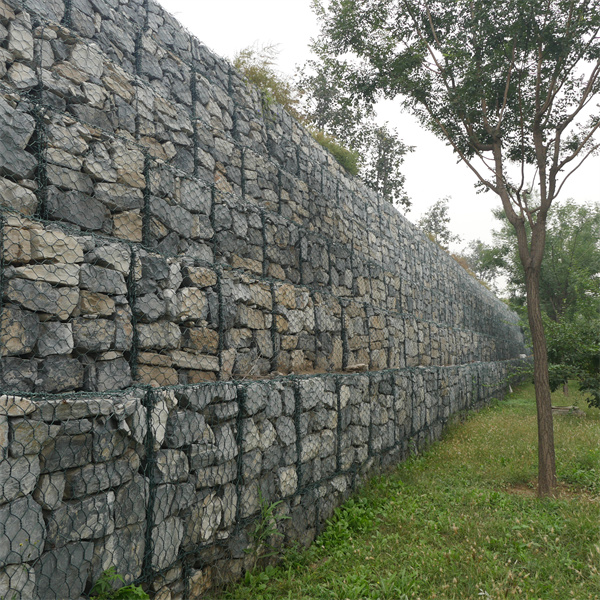تەموز . 28, 2024 16:47 Back to list
Cost-Effective Solutions for Building Durable Gabion Retaining Walls in Your Landscape Design
Wholesale Gabion Retaining Wall Construction
Gabion retaining walls have gained popularity in various construction and landscaping projects due to their durability, versatility, and aesthetic appeal. These walls are constructed from wire mesh cages filled with stones or similar materials, providing both structural support and effective erosion control. In recent years, the demand for wholesale gabion retaining wall construction has surged, as builders and developers recognize the advantages of incorporating gabion structures into their projects.
Understanding Gabions
A gabion is essentially a wire mesh container that is filled with rock, concrete, or other durable materials. These cages are typically made from galvanized or PVC-coated wire, ensuring they can withstand harsh weather conditions and resist rusting over time. The simplicity of gabion walls makes them an attractive option for various applications, including landscaping, road building, and environmental protection.
Benefits of Gabion Retaining Walls
1. Erosion Control Gabion walls are highly effective at controlling soil erosion, particularly in areas with steep slopes. The weight of the stones holds the soil in place, preventing landslides and washouts.
2. Aesthetic Appeal Given the natural materials used in gabion walls, they can blend seamlessly into the environment. Homeowners and developers appreciate the rustic look of these structures, which can enhance the beauty of any landscape.
3. Cost-Effective When sourced wholesale, gabion materials can be more affordable than traditional retaining wall options. Additionally, the ease of installation can lead to reduced labor costs, making them an economically sound choice for many projects.
4. Drainage Gabion walls are inherently permeable, allowing water to flow through them rather than accumulating behind the wall. This drainage capability reduces the buildup of hydrostatic pressure, which can lead to wall failure.
5. Sustainable Option Utilizing natural stones in gabion walls contributes to sustainability efforts. The materials are often locally sourced, reducing transportation costs and environmental impact.
wholesale gabion retaining wall construction

Construction Process
The construction of a gabion retaining wall involves several essential steps
1. Site Preparation Clear the area where the wall will be built, ensuring proper drainage and grading to accommodate the weight of the structure.
2. Foundation A stable foundation is crucial for the wall’s longevity. Depending on the height and load of the wall, excavation may be necessary to reach stable subsoil.
3. Cage Assembly Gabion cages can be purchased wholesale to save costs. Once on-site, assemble the cages, ensuring they are square and aligned correctly.
4. Filling the Cages Fill the cages with the chosen materials, usually stones. The filling process should be done carefully to prevent the cages from becoming overly distorted.
5. Stacking and Securing If building a multi-tiered wall, each layer must be securely stacked and possibly wired together for added stability.
6. Finishing Touches Once the gabion wall is constructed, consider adding vegetation or additional stones to soften its appearance and integrate it with the surroundings.
Conclusion
Wholesale gabion retaining wall construction is a practical solution for many engineering and landscaping challenges. With their numerous benefits – including erosion control, aesthetic value, cost-effectiveness, drainage capabilities, and sustainability – gabion walls are becoming the preferred choice for both residential and commercial projects. As more builders and developers recognize the advantages of these structures, the trend towards utilizing gabion walls will likely continue to grow in the coming years. Whether you're a homeowner looking to enhance your property or a commercial developer seeking efficient solutions, gabion retaining walls offer a compelling option worth considering.
-
The Role of Galvanized Gabion Mesh in Riverbank Protection
NewsJun.26,2025
-
The Role of Gabion Basket Raised Bed in Sustainable Gardening
NewsJun.26,2025
-
Quality Assurance of Wire Mesh Gabion Baskets
NewsJun.26,2025
-
Installation Guide for Welded Gabion Box
NewsJun.26,2025
-
How to Choose the Right Gabion Box
NewsJun.26,2025
-
Different Types of Gabion Wire Mesh
NewsJun.26,2025
-
Why PVC Coated Gabion Mattress Is the Best Solution for Long-Term Erosion Control
NewsMay.23,2025






